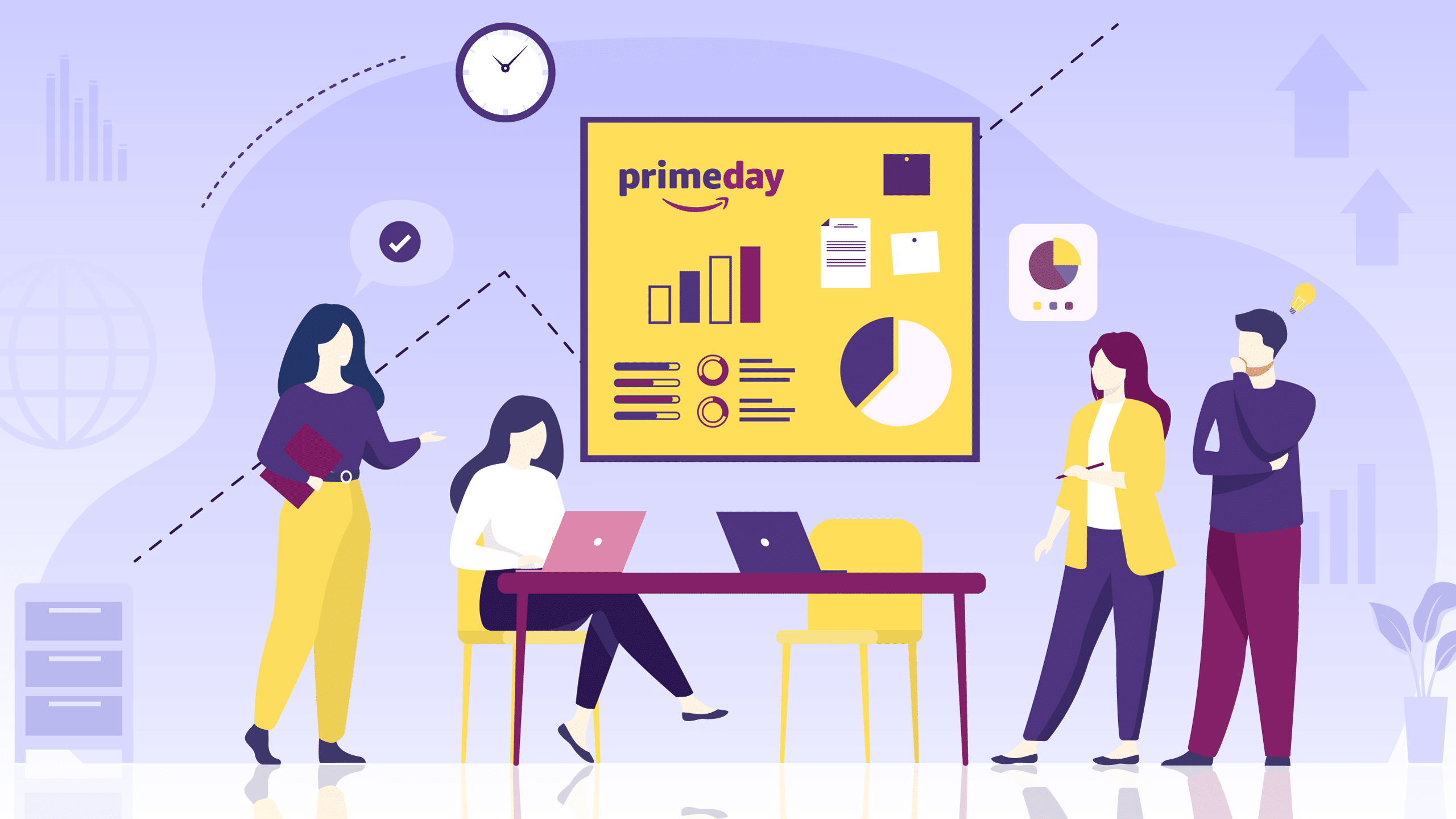It’s no secret that Amazon is has become the top online retail platform with 2.5 million active sellers. This increase in competition has required sellers to fully optimize their ad campaigns in order to stay top-of-mind. But this can be difficult, as an experience in Amazon advertising is an education in itself. There are different kinds of sellers, strategies, and platforms to help leverage user search data – it’s all a little overwhelming sometimes!
The increased competition and complexity of Amazon advertising have resulted in sellers facing profit margin pressure, as cost per click (CPC) rise by 38%.
Starting with the basics is recommended, and will provide a solid foundation when implementing more advanced tactics.
TDLR: If you’re looking for the fastest and easiest way to ensure that your Amazon ads are being fully optimized and your PPC campaigns are profitable, look no further than Trellis. We handle the technical side of things while you focus on growing your business.
We want sellers of all disciplines and backgrounds to see that marketing via great content, strong reviews, competitive pricing, and a data-driven PPC campaign are the most effective way of generating more sales and buzz. In this article, we’re going to look at 9 strategies on how to increase your Amazon advertising sales, and establish a strong brand position.
1. Do the Math!
We can’t emphasize enough the importance of thoughtful budget calculations before worrying about keyword optimizations and bidding. To focus on the latter before the former is going to create plenty of headaches when you’re trying to ensure a steady profit stream and justify certain active listings. But how do you go about doing this?
To start, make sure you know the total cost of the product before considering ad spend. This means everything from manufacturing costs to even fees associated with listing and shipping needs to be considered. Add everything up, deduct it from your sale price per unit, and you’ll have a clearer understanding of your profit margin.
Next, with that profit margin in mind for a specific product listing – let’s say you currently sit at 20% – deduct the percentage that you want to save for pure profit. The remaining percentage is your total advertising cost of sale (TACoS), which is the maximum you can invest in ad spend without taking a bite out of your desired profit.
Check out our ACoS calculator to help with this step 
2. Bid Sensibly and Bypass the Gambling
Next up is the ever-exciting world of keyword bidding. It’s important to be realistic. It can be very tempting to invest in an ultra-lucrative keyword at a high bid to guarantee that you get the highest sponsored search results rankings. Again, that available ad spend should always be repeating in your head like a mantra – bid only the maximum amount you can afford for that specific keyword.
This does two things:
- Ensures you never overspend and are protecting your profit margins
- If you do bid the highest, you’re only going to have to pay what the second-place seller bid anyway.
In short, you can skip the gambling and still improve the chances of your campaign succeeding if you bid sensibly!
3. Excite Shoppers with Engaging Copy
Ever happen to come across one of those shady-looking product listings that are poorly translated, filled with strange symbolism, and resembles hieroglyphs more than ad copy? These are the listings that never perform well, even if the pricing is absurdly low, but why is that?
In essence, consumers are smarter than ever. High-quality text content is like product packaging. It is a great way to assure them that your value propositions – what your products can do and what makes them unique – are valid and relevant to them. On that note, optimizations with keywords that are naturally inserted are important here; your listing copy shouldn’t feel like a Trojan horse but it also needs to engage them. It’s a fine line to walk but, with practice and data-driven optimization, it’s easier to stay balanced. Other creative elements such as video clips and imagery are necessary for this reason; show and don’t straight-up tell – preferably in a high-resolution format.
To help with this step, we’ve created a free chrome extension that evaluates your Amazon listing. Check it out here.
4. Don’t Make Fake Friends
Have you ever taken the chance and ordered something on Amazon with no reviews? Most likely not. A thoughtfully articulated, positive review, especially if it includes photographs of the actual product a customer receives, can instill a sensation of trust in shoppers. Plenty of sellers enjoy accumulating these in an honest manner, encouraging feedback via discounts on future orders regardless of whether a customer had a positive or negative experience.
These sellers are often the most successful, even if they have a rough product launch or otherwise: they’re being fair, approachable, and considerate. Online shoppers can spot this a mile away and will have more confidence in your brand this way.
What you don’t want to do is coerce customers to leave a positive review or complain if they leave a one-star review. If they had a horrible experience, you need to be responsible and make it right. In fact, each bad experience is a chance to show every viewer of your listing that you’re actively listening and want to ensure a positive experience. This is important because, although no seller can be perfect, it’s how feedback is consulted that shows who is worth investing in. Don’t be one of those companies who buy reviews and never benefit from these ultra-valuable insights – to understand customers and their needs is to make smarter optimizations in the long run. What sellers can do, however, is request reviews from buyers. Regardless of the review, good or bad, you can use these insights to your advantage.
5. Negative Keywords can Have a Positive Influence
There’s no better way to drive down your ad spend by bidding on keywords efficiently. Those keywords that aren’t worth paying for or tracking, fittingly known as negative keywords, are a waste. The more you bid on keywords and better understand them, the more refined and careful your selection strategy will become. Practice makes profit!
6. A Fair Price on Products – and Not Just for Customers
If you’re selling a 65-inch OLED 4K television with HDR 10+ support for $499, something’s wrong. Either the product is extremely low in quality due to cheaper components (risking a negative impression of your brand’s quality assurance) or you didn’t calculate your profit margins correctly. We’ve already touched on how to do this earlier and, while it’s remarkably simple, you don’t want to leave out any costs associated with manufacturing, listing and shipping the product when deducting from the sale price.
Continuing the TV example, the problem is that you aren’t creating a decent enough window for your profit margin. If, say, you only can wrangle 10 percent, your actual profits are going to be next to nothing when factoring in your advertising cost of sale (ACoS). Your total advertising cost of sale per unit (we like to call it TACoS) is another problem; it’s basically the actual profit you can make. In order to make an even not-that-great income from each sale, again following this example with 10 percent of wiggle room, you’d have maybe a few percentage points available for your ACoS.
We have a little rhyme for this, as explained further in our guide on Amazon Sponsored Products ad creation: if you’re hungry for TACoS, don’t fill up on ACoS. In other words, if you want profit, make sure you have the breathing room after paying for ads. Charge what your products are worth, not what you think is the best deal possible – if something is built well with a good reputation but costs more, your conversions aren’t going to suffer. One look at Amazon’s Kindle and Echo products demonstrates this in spades.
7. Strategic Pricing for More Conversions
Speaking of targeting segments, are your sponsored products organized under appropriate ad groups? It’s a great way to generate interest from like-minded shoppers who have demonstrated an interest in the types of items you have for sale. For instance, again using the TV example, let’s say that someone with a long search history of specific models, sizes, and display types appears to have really done their research. They’re also having a hard time deciding since the many different types of models are starting to blur in their head.
Then, the shopper happens to come across that suspiciously low-priced 4K OLED TV, just the size they wanted with HDR 10+ certification. However, they’ve done their homework and know that the price makes no sense for what’s being offered.
Then, their eyes are drawn back up the page to a listing they hastily skimmed through: yours. The TV your selling costs more but, as indicated via your high-quality listing copy, includes a three-year warranty and far better build quality. It’s also a brand that they would sooner trust, helping them justify the higher price. Better still, competing models from other sellers are still more expensive, just by a couple of hundred dollars but higher nonetheless, because you’ve done your homework: the price is high enough to create enough profit after ad spend but still at a good enough value to draw eyes away from competitors – even that cheaper model left on the shelf to linger in Amazon’s warehouses.
This entire example, right here, is proof that optimizing your listings according to related categories can create more opportunities for moving inventory. Once you see it, you won’t want to stop finetuning to draw shoppers to your listings!
8. Harness Amazon’s Vault of Search Data!
It’s positively mind-boggling just how much info Amazon has on individual user behaviours, search habits, click histories and so much more. However, it’s not available to everyone. If you’re not selling on Amazon, now is seriously the time to consider setting up a profile and diving in. This is especially true since, thanks to automated software solutions to help you make more proactive ad campaign optimizations, you never have to face the sheer number of decisions and data points alone.
What’s more, you can really paint a clear, enthralling picture of what potential your listings have by combining Amazon’s available non-sensitive user data with your own data analytics pertinent to your seller profile. This is especially useful if you’ve been doing business over Amazon for some time and have accumulated a data history, which you can pull from and consult against the latest real-time search data. This can inform everything from which keywords to bid on to how to word your listing titles.
9. Grow with an Automated Software Solution
As hinted at earlier, you never have to face the massive archive of analytical data – or any aspect of your campaign – all alone. Platforms like Trellis are powerful, user-friendly add-ons that help you drive ad spend down and profits up, and it’s all possible thanks to how we automate keyword discovery, bid management, and budget management. We also offer pricing to suit businesses of all sizes so, regardless of whether you’re a two-person start-up or represent a multinational, world-renowned brand, we’re still able to provide you with valuable insights. Trellis in particular is designed to offer single-click, streamlined optimizations that are autonomously managed so you, as an Amazon seller, can focus on the other aspects of your business.
Final Thoughts
There has never been a better time to improve your Amazon advertising strategy. These are just some of the many ways you can get the most out of your ad campaigns, regardless of whether you opt for Amazon Sponsored Product ads, their Demand Side Platform, or otherwise. Combined with the help of our team at Trellis – including hassle-free software anyone can comfortably use along with truly professional support – there’s also never been so many chances for your business to grow, thrive, and do more than “just survive.” It’s time to break beyond merely breaking even; reach out to our team today to get started on optimizing your ad campaigns, listings, and business potential!





